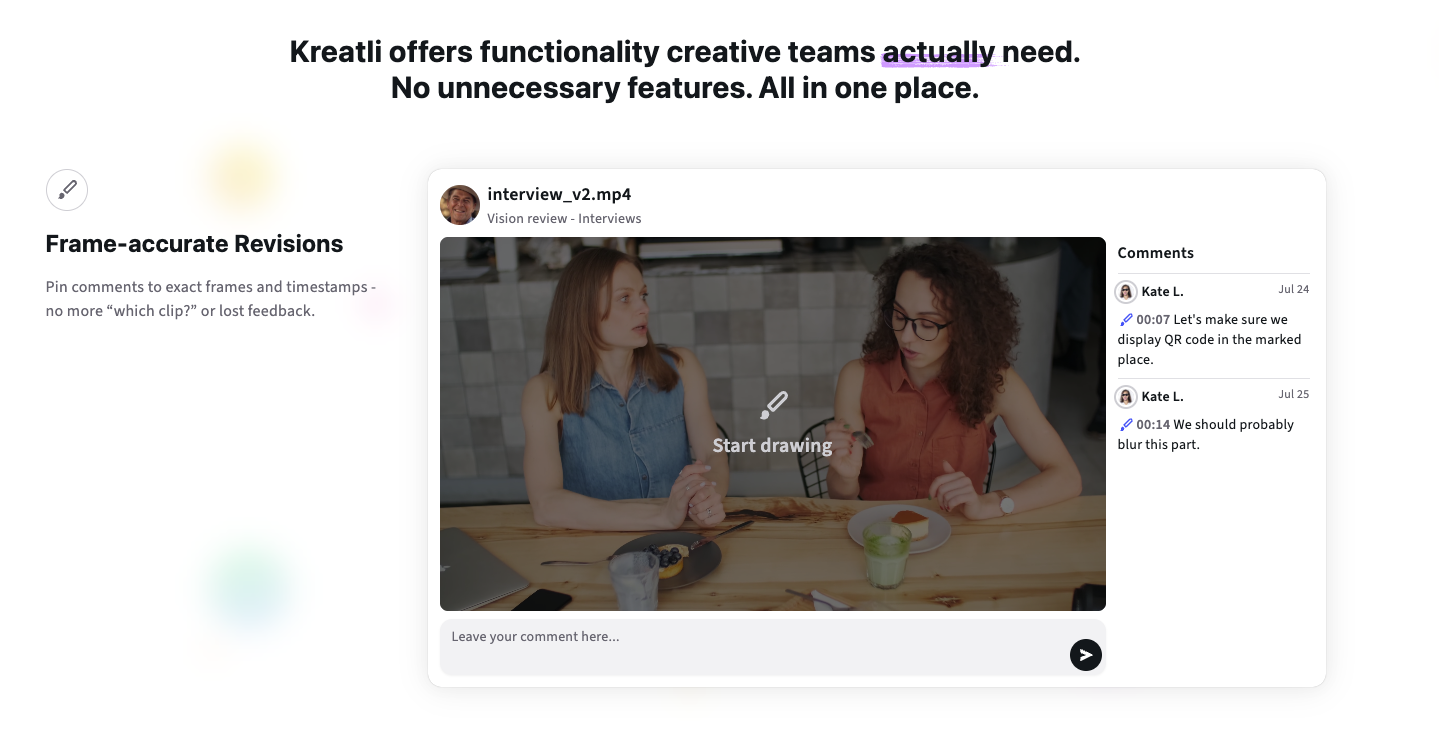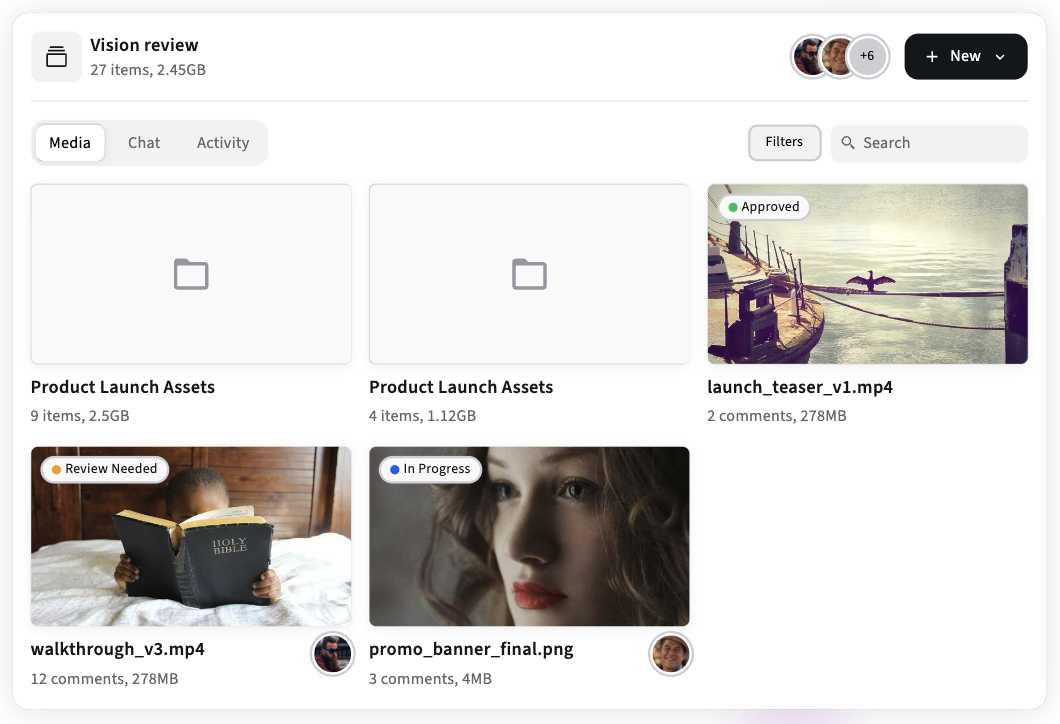Post-Production Video Editing: How Collaboration Tools Improve Cuts
Collaboration tools change how editors work - fewer context switches, frame-accurate feedback, faster turnarounds, and better reuse. Practical setups, integrations and metrics to measure improvement.

Collaboration tools aren’t “nice to have” - they change the cut
Editors don’t just need faster machines; they need cleaner feedback, fewer interruptions, and predictable review cycles. Collaboration tools that put comments at the frame, manage versions, and keep files and chat inside the same project reduce noise and let editors make better creative choices faster. Below I’ll show the specific ways collaboration tools improve cuts, concrete setups to try, and KPIs to track.
1) Frame-accurate feedback turns vague notes into edit directions
The difference between “fix the pacing” and “speed up at 00:00:47–00:00:52 by 0.4s” is enormous.
Timecode-pinned comments let editors apply precise changes rather than guess.
Comment threads with proposed fixes (reviewer suggests “trim 2 frames”) let editors make small changes without multiple rounds.
Visual annotations (draw-on-frame, crop handles) reduce ambiguity, especially for motion graphics or VFX passes.
Result: fewer re-opened tickets, faster passes, and higher editorial confidence.
2) Fewer context switches - editors remain in flow longer
Every time an editor leaves the NLE to hunt for a file or parse an email, creative momentum drops.
Project-first platforms keep chat, assets, and comments in one place so editors don’t leave their environment to find feedback.
In-app notifications and task assignments allow editors to pick the next prioritized fix and get back to cutting quickly.
Less app-hopping equals more uninterrupted editing time - and better creative choices.
3) Cleaner versioning - stop re-editing the wrong file
Version chaos kills time.
Enforced version names and automated foldering avoid overwrites.
Approval gating (explicit “Final approval” buttons) reduces uncertainty about which cut to deliver.
Visible version lineage (v01→v02→v02-final) helps editors roll back or compare quickly.
This improves risk management and prevents rework caused by mistaken exports.
4) Proxy-first workflows keep reviews fast without sacrificing fidelity
Editors can maintain high-resolution masters locally while stakeholders review proxies.
Automated proxy generation after ingest allows immediate sharing.
Streaming proxies mean clients can comment from phones or slow networks.
Side-by-side compare (A/B versions) helps stakeholders pick the best pacing or color pass without downloading heavy masters.
Faster feedback = more iterative creative exploration without extending deadlines.
5) Better collaboration with motion/VFX/graphics teams
Complex builds require many hands.
Frame-accurate notes with attachments (reference frames, sketch overlays) reduce back-and-forth with VFX.
Shared asset libraries and version locks keep graphics and plates consistent.
Task assignments ensure an effects artist knows the exact frame range to deliver.
This reduces friction between editing and finishing disciplines.
6) Integrations that save time - NLE roundtrips & markers
Tight integrations change the game.
Roundtrip markers between review tools and NLEs import time-stamped notes as sequence markers, saving manual transcription.
Direct media linking avoids reimporting exports; instead editors relink to updated masters.
Scripting & automation can name exports, generate proxies, and move completed versions into archivals automatically.
A well-integrated pipeline turns feedback into action within minutes, not hours.
7) How to set up a collaboration-first editing stack (practical)
NLE of choice (Premiere, Resolve, Final Cut) - maintain local master editing on a fast SAN/NAS.
Project-first workspace - host proxies, comments, approvals, and client invites. (Kreatli is an example platform that bundles project chat, proxy reviews and version history in one workspace.)
Transfer tool when needed - Aspera/MASV for big master movement.
Automation/Orchestration - serverless jobs for proxy generation, notifications, and storage lifecycle.
Security & access - SSO, MFA, and project roles for external vendors.
This stack reduces manual handoffs and surfaces the right asset to the right person at the right time.
8) KPIs you should track to prove ROI
Measure before/after to justify tool changes:
Average review rounds per deliverable (target: reduce by 30% within 6 weeks).
Time from first edit to client sign-off.
Editor context-switch minutes per day (how long editors spend outside the NLE looking for info).
Number of version mismatches (count of times the wrong file was delivered or used).
Turnaround days per revision (reduce this to shorten total project timelines).
Collecting these metrics shows concrete productivity gains and builds a case for investment.
Where Kreatli helps editors
Kreatli provides a project-first workspace with proxy playback, frame-accurate comments, and project chat - the exact mix editors need to lower context switching and speed revisions. Use Kreatli to host proxies, gather client comments, and keep version history tied to each project so editors can focus on the cut instead of chasing feedback.
FAQs:
Q: Will collaboration tools replace editors?
A: No. They remove friction so editors can spend more time creatively; tools accelerate the process but don’t replace craft.
Q: Do these tools work with Resolve/Final Cut or only Premiere?
A: Many modern tools support marker import/export or offer generic EDL/XML workflows that work with most NLEs.
Q: How fast will I see benefits?
A: Teams often see measurable improvements (fewer review rounds, faster sign-off) within the first pilot project - typically 2-6 weeks.
Conclusion
Collaboration tools materially improve the quality and speed of post-production editing by removing ambiguity, reducing context switches, enabling proxy-first review, and automating versioning. Run a short pilot with a project-first workspace, measure the KPIs listed above, and you’ll quickly see whether the tools reduce review rounds and give editors more uninterrupted creative time. If you want a place to run that pilot, create a free Kreatli project and import one current brief - it’s the fastest way to see the difference in real delivery times.
Can Kreatli become your Production Management Platform?
Host proxies, collect frame-accurate comments and measure your first pilot’s ROI.
